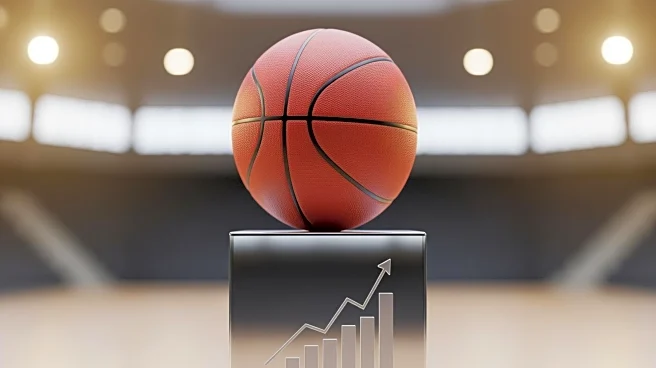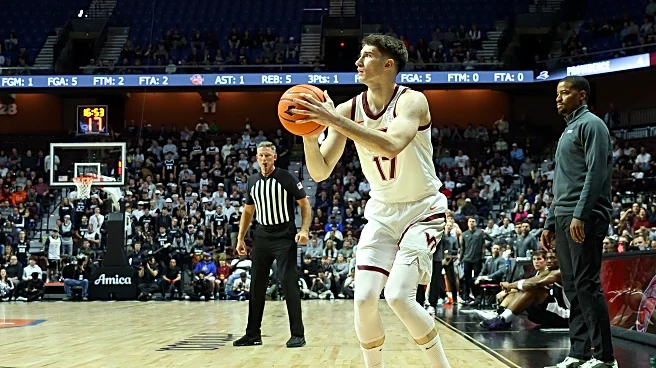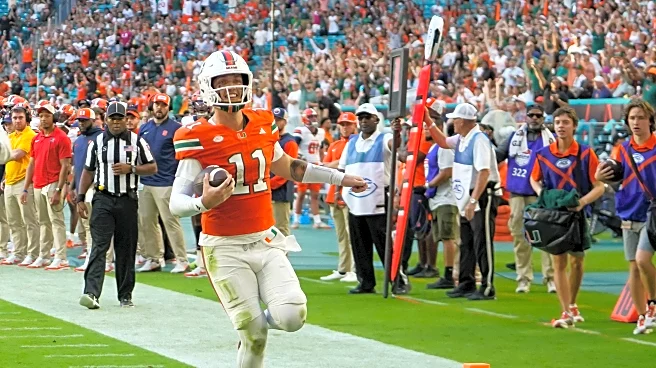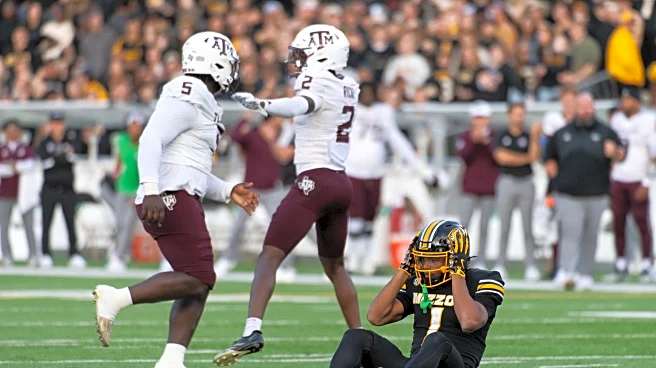What's Happening?
BYU freshman AJ Dybantsa has achieved the highest NIL valuation in college sports, with a value of $4.4 million according to On3. This places him above Ohio State's Jeremiah Smith and Texas quarterback
Arch Manning. Dybantsa, a 6-foot-9 forward, is considered the most marketable athlete in college sports and the highest-valued basketball player. His decision to join BYU over other top programs like Duke and North Carolina was speculated to be influenced by NIL opportunities, with potential deals rumored to reach $7 million. Dybantsa, however, emphasized his choice was based on BYU's development program under head coach Kevin Young, aiming for his NBA future. He holds endorsement deals with Nike and Red Bull, further boosting his profile.
Why It's Important?
Dybantsa's NIL valuation highlights the growing influence of NIL deals in college sports, particularly basketball. His record-setting valuation underscores the financial opportunities available to top athletes, potentially reshaping recruitment strategies and program selections. This development could lead to increased competition among universities to offer attractive NIL packages, impacting the traditional dynamics of college sports. Athletes and programs that can leverage these opportunities may gain significant advantages in terms of talent acquisition and retention, influencing the future landscape of college athletics.
What's Next?
As Dybantsa begins his anticipated one-year tenure at BYU, his performance and marketability will be closely watched. His success could set a precedent for future athletes considering NIL opportunities as a major factor in their college decisions. Universities may respond by enhancing their NIL offerings to attract top talent, potentially leading to regulatory discussions on the impact of NIL deals on college sports. Dybantsa's journey will likely influence how athletes and institutions navigate the evolving NIL landscape.
Beyond the Headlines
The rise of NIL valuations like Dybantsa's may prompt ethical and legal considerations regarding the commercialization of college sports. Questions about the balance between education and athletics, and the potential exploitation of young athletes, could arise. Long-term, this trend might lead to shifts in how college sports are perceived and managed, with implications for athlete welfare and institutional priorities.













